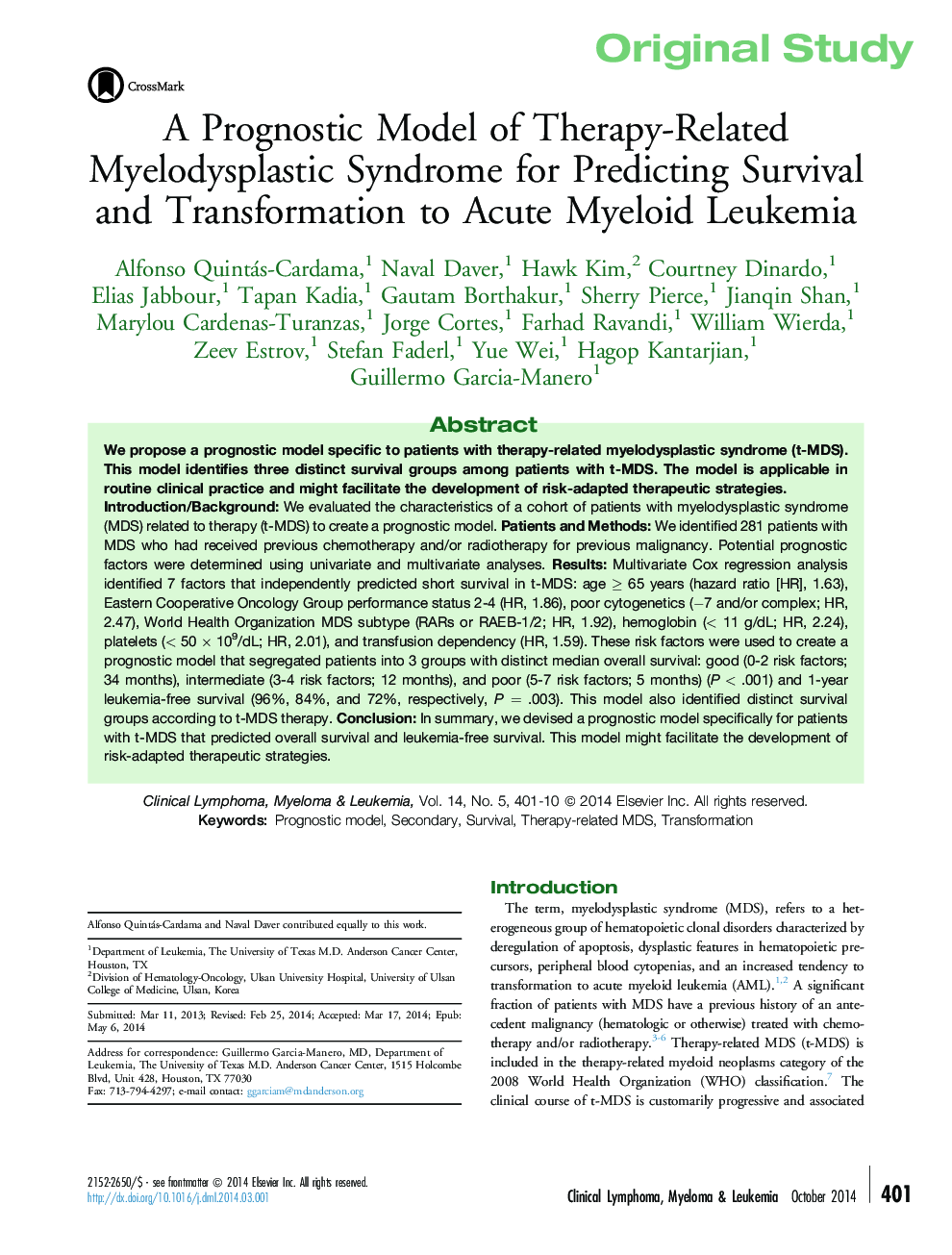| Article ID | Journal | Published Year | Pages | File Type |
|---|---|---|---|---|
| 5882931 | Clinical Lymphoma Myeloma and Leukemia | 2014 | 10 Pages |
Introduction/BackgroundWe evaluated the characteristics of a cohort of patients with myelodysplastic syndrome (MDS) related to therapy (t-MDS) to create a prognostic model.Patients and MethodsWe identified 281 patients with MDS who had received previous chemotherapy and/or radiotherapy for previous malignancy. Potential prognostic factors were determined using univariate and multivariate analyses.ResultsMultivariate Cox regression analysis identified 7 factors that independently predicted short survival in t-MDS: age ⥠65 years (hazard ratio [HR], 1.63), Eastern Cooperative Oncology Group performance status 2-4 (HR, 1.86), poor cytogenetics (â7 and/or complex; HR, 2.47), World Health Organization MDS subtype (RARs or RAEB-1/2; HR, 1.92), hemoglobin (< 11 g/dL; HR, 2.24), platelets (< 50 à 109/dL; HR, 2.01), and transfusion dependency (HR, 1.59). These risk factors were used to create a prognostic model that segregated patients into 3 groups with distinct median overall survival: good (0-2 risk factors; 34 months), intermediate (3-4 risk factors; 12 months), and poor (5-7 risk factors; 5 months) (P < .001) and 1-year leukemia-free survival (96%, 84%, and 72%, respectively, P = .003). This model also identified distinct survival groups according to t-MDS therapy.ConclusionIn summary, we devised a prognostic model specifically for patients with t-MDS that predicted overall survival and leukemia-free survival. This model might facilitate the development of risk-adapted therapeutic strategies.
